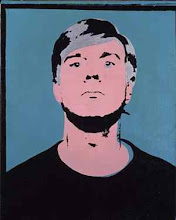 |
| Newport Transporter Bridge viewed from below. |
(NB click on images to enlarge.)
Highlights of the day included:
Newport Civic Centre
Designed by Cecil Howitt, construction of the Civic Centre was begun in 1937, but suspended at the outbreak of War; building recommenced in 1950, but the clock tower was not begun until 1963 - and then despite a public vote objecting to its cost. Our visit was principally to see the suite of murals by Hans Feibusch (assisted by Phyllis Bray) executed between 1961 and 1964. The murals tell the story of local history. We were subsequently privileged to view a portfolio of Feibusch's original drawings and cartoons for the murals held at Newport Art Gallery.
Odeon Cinema
An excellent example of Art Deco cinema architecture by Harry Weedon and Arthur J. Price, built 1937-38
Newport Transporter Bridge
This was a real treat! The bridge, opened in 1906, is beautiful - much more slender and delicate that I had imagined from seeing it in the distance. It was thrilling to climb up the tower and walk across the upper deck looking down to the River Usk below, descend on the other side, and return as a passenger on the suspended 'gondola'. Wonderful.
Newport Civic Centre
Designed by Cecil Howitt, construction of the Civic Centre was begun in 1937, but suspended at the outbreak of War; building recommenced in 1950, but the clock tower was not begun until 1963 - and then despite a public vote objecting to its cost. Our visit was principally to see the suite of murals by Hans Feibusch (assisted by Phyllis Bray) executed between 1961 and 1964. The murals tell the story of local history. We were subsequently privileged to view a portfolio of Feibusch's original drawings and cartoons for the murals held at Newport Art Gallery.
 |
| Hans Feibusch, murals at Newport Civic Centre: (l to r) The Burning of Newport Castle, The Battle of Agincourt, The Surrender of Raglan Castle, 1961-4 |
 |
| Hans Feibusch, The Battle of Agincourt, (detail of murals at Newport Civic Centre), 1961-4 |
 |
| Hans Feibusch, Steelworks, (detail of murals at Newport Civic Centre), 1961-4 |
 |
| Hans Feibusch, The Building of the George Street Bridge, (detail of murals at Newport Civic Centre), 1961-4 |
An excellent example of Art Deco cinema architecture by Harry Weedon and Arthur J. Price, built 1937-38
 |
| Harry Weedon, Odeon Cinema, Newport, 1937-8 |
 |
| Harry Weedon, Odeon Cinema, Newport, 1937-8 (detail) |
This was a real treat! The bridge, opened in 1906, is beautiful - much more slender and delicate that I had imagined from seeing it in the distance. It was thrilling to climb up the tower and walk across the upper deck looking down to the River Usk below, descend on the other side, and return as a passenger on the suspended 'gondola'. Wonderful.
 |
| View across the upper deck - walkways are to the right and left. |
 |
| View up river from upper deck - click on image to see full width |
 |
| View down river from upper deck - click on image to see full width |
A public park laid out in 1892-4 to designs by Thomas Mawson, featuring an elegant Edwardian pavillion and conservatory, and a bandstand.
 |
| View of Newport Transporter Bridge from the terrace at Belle Vue Park |
Thanks to the C20 Society and Judi Loach, in particular, for a splendid day.







































